Taste the Untold Side of Africa:
Nature has gifted Africa with unique and diverse landscapes, from lush rainforests and rolling savannas to dry deserts and pure-water river valleys with fertile lands. So, it should not surprise you that some of the most exotic, flavorful, and nutritious fruits are grown in these environments, which are not found on other sides of the planet.
While the world is familiar with some common fruits like bananas, mangoes and apples, Africa grows over 100 unique tropical exotic fruits. Many of them are still secret to the other subcontinents of the world. These African exotic fruits are rare and full of vitamins, antioxidants, and cultural and traditional healing powers.
The varieties of these exotic fruits include tangy ones like citrus candy and buttery ones like avocado. Many are used in traditional medicines, rituals, or festive foods.
The baobab fruit, an ancient healing fruit and remarkable flavor changer like the miracle berry, and many more like it, are really rare African fruits that are finally getting the attention of other parts of the world. As superfoods gain popularity in health trends, people are discovering that many of the world’s powerful fruits are grown in Africa.
Therefore, you will discover in this post:
- 30+ exotic African fruits you’ve probably never heard of
- What they taste like and their unique health benefits
- Where to buy, grow, or try them fresh
- Simple recipes and ways to enjoy them at home
Whether you’re a foodie, a wellness lover, or just curious, this post is your passport to discovering Africa’s hidden fruit treasures.

Why African Fruits Are Unique:
As mentioned, Africa is a continent bursting with biodiversity, rich soils, and a unique range of climates. This natural climate variety gives Africa an incredible range of exotic fruits unavailable in other regions. But what makes African fruits so unique;
1. Grown in Natural Ecosystems:
Mostly, African fruits grow in the wild, without human interference in natural ecosystems that have existed for thousands of years. These exotic fruits are not just rare; they are deeply rooted in African cultural and ideological history. Fruits like baobab,safou and marula have been used in traditional diets and medicines for centuries.
- For Example, The Baobab tree, often called the “Tree of Life,” produces a nutrient-rich fruit that dries naturally on the branch—something scarce in the fruit world.
2. Nutritional Powerhouses:
These exotic African fruits are unique and contain vitamins, minerals, and antioxidants. Because they are grown in harsh conditions, they evolve to be nutrient-dense and resilient. Therefore, these fruits are not just flavorful but also highly beneficial to health.
- Example: The miracle berry from West Africa changes sour flavors to sweet—completely natural! And the baobab fruit contains more Vitamin C than oranges and more calcium than milk.
3. Unique Flavors and Textures:
African exotic fruits give you a taste experience that is different from the other common fruits like apples, bananas and oranges. Some exotic fruits are creamy, like avocado, while others are tangy, sweet, or even spicy. Their flavor profiles are often bold and memorable.
- Example: Safou becomes soft and buttery when roasted. The desert date has a bittersweet taste with medicinal value. These are not just fruits—they’re flavor adventures.
4. Medicinal and Cultural Significance:
African exotic fruits are not just fruits; cultural and traditional boundaries bind them. Many African fruits are used in conventional medicines; they are used for improved digestion, skin care, better immune health and more. Besides their health benefits, these fruits play essential roles in African rituals, festivals, and storytelling occasions.
Example: Marula is believed to have spiritual powers in some African tribes and is also used to produce Amarula cream liqueur, which is famous worldwide.
5. Naturally Organic and Sustainable:
Most African exotic fruits are wild-harvested or grown without synthetic fertilizers or pesticides. Because many communities rely on natural farming, these fruits are typically organic by default, making them a healthier and more eco-friendly option.
Example: Wild-harvested shepherd tree berries and African medlar fruits are often gathered straight from nature without any chemicals or machinery.
6. Limited Global Commercialization:
Many exotic African fruits, like bananas and apples, are not yet mass-produced for worldwide markets. These conditions add extra uniqueness and appeal to exotic African fruits. If you want to taste nature’s secret treasure, try these exotic fruits.
Example: Fruits like jackalberry, velvet tamarind, or snot apple are little known outside Africa but deeply cherished within local cultures.
Rising Global Demand for African Superfruits:
Today, the world is waking up to the power of African superfoods.
- Baobab powder is now sold worldwide as an energy booster and immunity support.
- Marula oil is used in high-end skincare for its anti-aging properties.
- Hibiscus petals (used in Zobo or Bissap) are brewed as detox teas around the globe.
- African bush mango (Ogbono) is trending for weight loss and metabolism support.
These African exotic fruits are becoming popular in the vegan, organic, and clean-eating movements because they are natural, packed with nutrients, and grown without chemicals.
You’ll now find African fruits in health food stores, online markets, and even in smoothie bars in the US and Europe.
30+ Rare African Exotic Fruits You’ll Want to Try:
For your easy understanding, here are 30 exotic African fruits, divided into 10 for each African region: West, East/Southern, and Central/North Africa. This makes it easier to explore the rich biodiversity and cultural importance of each fruit in its natural habitat.
As we know, each African region has its unique climate, soil and traditional uses that shape the flavor, nutrition and availability of these fruits.
By grouping them geographically, you can better understand how the different landscapes influence what grows there.
West Africa’s Exotic Gems (with Cultural Uses & Easy Recipes):
- Ackee (Blighia sapida)
- It Tastes Buttery, nut-like always when fully ripe because unripe could be toxic.
- Uses: Cooked in savory dishes (famous in Jamaican cuisine)
- Cultural Significance: Traditionally used in celebratory dishes across West Africa, considered a delicacy in many communities.
- Easy Recipe:
- Ackee Stir-Fry: Boil ripe ackee until soft, sauté with onions, tomatoes, and peppers, and serve with rice or fried plantains.
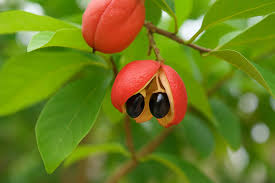
2. African Star Apple (Agbalumo / Udara)
- Taste: Tangy-sweet, chewy pulp, jelly-like
- Fun Fact: A schoolyard favorite snack in Nigeria
- Cultural Significance: Eaten during harmattan season; symbol of childhood and communal sharing in Nigeria.
- Easy Recipe:
- Agbalumo Zobo (Spiced Drink): Slice agbalumo and add it to hibiscus flower tea with ginger and cloves; serve chilled.

3. Bush Mango (Ogbono)
- Taste: Slightly sour pulp; seeds are savory
- Uses: Seeds used in soups as a thickener
- Cultural Significance: A core part of Nigerian, Cameroonian, and Ivorian cuisine, often used in traditional family meals.
- Easy Recipe:
- Ogbono Soup: Grind dried seeds and cook with stock, meat, and vegetables for a thick, nutty stew.
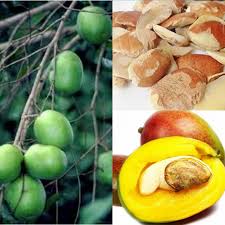
4. Velvet Tamarind (Icheku)
- Taste: Sweet tart with powdery pulp.
- Uses: Sucked as candy, steeped as tea.
- Cultural Significance: Sold by street vendors; widely enjoyed by schoolchildren as a natural sweet treat.
- Easy Recipe:
- Icheku Tea — Soak the pulp in warm water, add honey or ginger, and drink as a natural digestive.

5. Néré (African Locust Bean)
- Taste: Strong, fermented flavor.
- Uses: Seasoning (Dawa Dawa) for soups and stews.
- Cultural Significance: A sacred tree in many Sahelian communities, its seeds are fermented in traditional family recipes.
- Easy Recipe:
- Dawadawa Stew — Add fermented locust bean paste to tomato stew with garlic, onion, and pepper.

6. Detarium Senegalese (Sweet Detar / Tallow Tree)
- Taste: Gummy sweet.
- Uses: Eaten raw, used in syrup and drinks.
- Cultural Significance: Common in markets across Mali and Senegal; sold as a street snack or traditional remedy.
- Easy Recipe:
- Detar Syrup — Boil fruit pulp with sugar, cinnamon, and lemon juice; strain and chill for a refreshing drink.
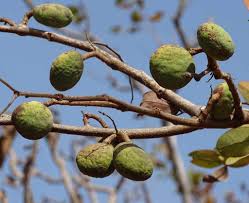
7. Spondias mombin (Yellow Mombin / Iyeye)
- Taste: Tart, juicy.
- Uses: Eaten raw or juiced.
- Cultural Significance: Used in traditional Yoruba medicine and widely consumed during festive seasons.
- Easy Recipe:
- Yellow Mombin Juice — Blend fresh fruit with water and honey; strain and serve cold.
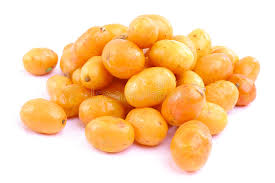
8. Irvingia gabonensis (Wild Mango)
- Taste: Bitter-sweet pulp.
- Uses: Thickener for traditional soups.
- Cultural Significance: A staple in local diets and a key part of regional trade in Cameroon and Gabon.
- Easy Recipe:
- Wild Mango Seed Sauce: Toast the seeds, grind them into powder, and mix with pepper and palm oil for a thick dip.
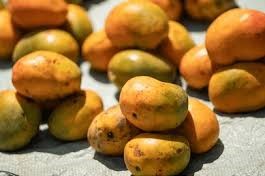
9. African Cherry Orange (Citropsis articulate)
- Taste: Sweet-citrusy.
- Uses: Eaten fresh.
- Cultural Significance: Believed to have aphrodisiac properties in Ugandan and Congolese traditions, sometimes used in marriage ceremonies.
- Easy Recipe:
- Citrus Smoothie — Blend cherry orange with pineapple and banana for a refreshing drink.

10. Bitter Kola (Garcinia kola)
- Taste: Very bitter.
- Uses: Chewed raw.
- Cultural Significance: Used in traditional welcome ceremonies and as a natural energizer; also gifted in cultural exchanges.
- Easy Recipe:
- Bitter Kola Herbal Tonic: Grate kola and mix with ginger, garlic, and honey in water; drink as a tonic (in small quantities).
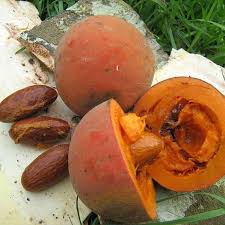
Nutritional Facts & Health Benefits Table – West African Fruits
| Fruit Name | Key Nutrients | Health Benefits |
| Ackee | Protein, healthy fats | Energy support, brain function |
| African Star Apple | Vitamin C, calcium | Immune boost, strong bones |
| Bush Mango | Fiber, healthy fats | Weight management, cholesterol control |
| Velvet Tamarind | Vitamin A, iron | Digestion, oral health |
| African Locust Bean | Potassium, fiber | Gut health, blood pressure regulation |
| Sweet Detar | Antioxidants, iron | Blood sugar control, immune strength |
| Yellow Mombin | Vitamin C, beta-carotene | Skin health, anti-inflammatory |
| Wild Mango | Healthy fats, protein | Heart health, appetite regulation |
| African Cherry Orange | Vitamin C, flavonoids | Circulation, sexual wellness |
| Bitter Kola | Antioxidants, caffeine-like alkaloids | Cough relief, stamina booster |
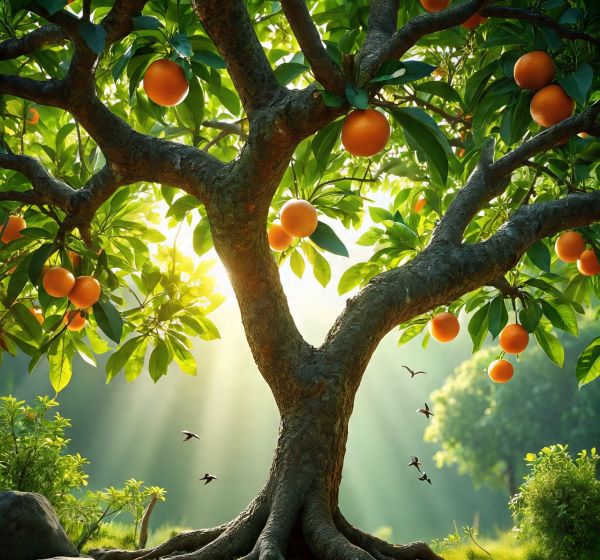
East & Southern Africa’s Hidden Fruits (Cultural Value + Recipes)
- Baobab (Adansonia digitata)
- Taste: Citrus-like, tangy, dry pulp
- Uses: Powder in smoothies, teas, baking
- Cultural Significance: Known as the “Tree of Life,” baobab is considered sacred in many communities. Its fruit and bark are used in both food and traditional healing.
- Easy Recipe:
- Baobab Smoothie — Blend baobab powder with banana, mango, and coconut milk for a vitamin-packed breakfast.
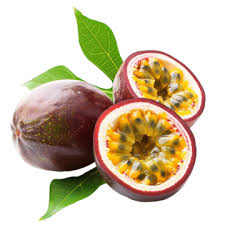
2. Marula (Sclerocarya birrea)
- Taste: Creamy, tart with tropical hints.
- Uses: Liqueurs (Amarula), oils, jams.
- Cultural Significance: Celebrated in traditional Southern African ceremonies, marula wine is made during seasonal gatherings.
- Easy Recipe:
- Marula Jam — Cook fruit pulp with lemon juice and sugar until thick; jar and enjoy with toast.
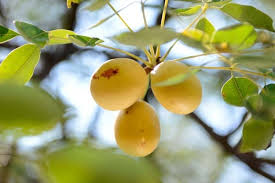
3. Monkey Orange (Strychnos spinosa)
- Taste: Zesty, tropical citrus with a thick shell.
- Uses: Jams, juices.
- Cultural Significance: Used by rural communities as a nutritious wild food during dry seasons.
- Easy Recipe:
- Monkey Orange Juice: Scoop out the pulp, blend with cold water and a bit of sugar, then strain and serve.
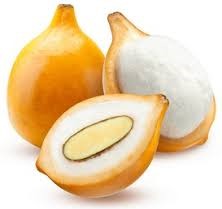
4. Snot Apple (Thespesia garckeana)
- Taste: Sweet, jelly-like texture.
- Uses: Eaten fresh or made into syrup.
- Cultural Significance: Common in Botswana and Zimbabwe, often foraged and enjoyed as a seasonal treat.
- Easy Recipe:
- Snot Apple Syrup — Simmer fruit with sugar and lemon zest, strain, and bottle as a syrup for pancakes or drinks.
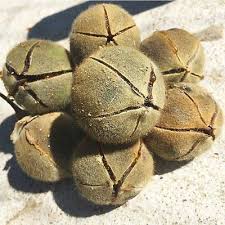
5. Tamarind (Tamarindus indica)
- Taste: Sweet-sour.
- Uses: Sauces, stews, drinks.
- Cultural Significance: Widely used in African-Indian fusion cooking, especially on the Swahili coast.
- Easy Recipe:
- Tamarind Chutney — Soak tamarind pulp blend with dates, cumin, and chili for a tangy dip.
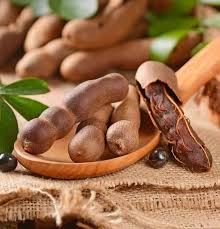
6. Waterberry (Syzygium cordatum)
- Taste: Juicy and tart.
- Uses: Eaten fresh, turned into jelly.
- Cultural Significance: Grows near rivers in South Africa and Mozambique; traditionally used to soothe stomach issues.
- Easy Recipe:
- Waterberry Jelly — Boil berries with sugar and lemon juice, strain, and store as jelly.
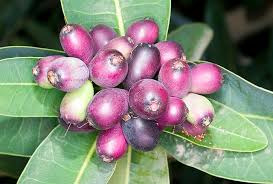
7. Num-num (Carissa macrocarpa)
- Taste: Cranberry-like, sour-sweet.
- Uses: Jams, preserves, wine.
- Cultural Significance: Grows along coastal South Africa; a favorite in homemade sweets.
- Easy Recipe:
- Num-num Jam — Mash fruit with sugar, simmer until thick, and bottle for use with bread or crackers.
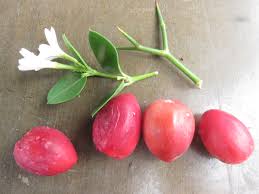
8. Wild Medlar (Vangueria infausta)
- Taste: Apple-like when ripe.
- Uses: Juices and fermented drinks.
- Cultural Significance: Traditionally used in Southern African herbal medicine, eaten during harvest festivals.
- Easy Recipe:
- Wild Medlar Juice — Blend ripe fruit with water and honey; strain and serve cold.
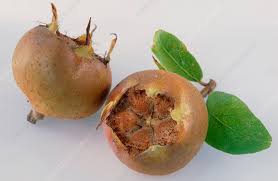
9. Kei Apple (Dovyalis caffra)
- Taste: Intensely tart.
- Uses: Fresh eating, preserves.
- Cultural Significance: Grown as thorny hedges in Southern Africa, valued as both food and natural fencing.
- Easy Recipe:
- Kei Apple Chutney — Cook chopped fruit with onion, ginger, and vinegar for a spicy preserve.
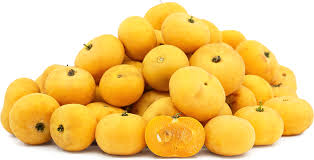
10. Cape Gooseberry (Physalis peruviana)
- Taste: Sweet-tart, tropical.
- Uses: Salads, desserts.
- Cultural Significance: Popular in South African markets and gardens; also used in modern gourmet dishes.
- Easy Recipe:
- Cape Gooseberry Tart — Use berries as filling in a shortcrust tart with honey glaze.
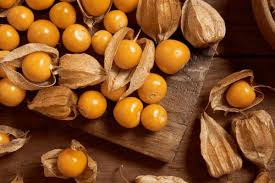
Nutritional Facts & Health Benefits Table – East & Southern African Fruits:
| Fruit Name | Key Nutrients | Health Benefits |
| Baobab | Vitamin C, fiber, calcium | Immunity, digestion, bone strength |
| Marula | Antioxidants, vitamin E, fatty acids | Skin health, anti-aging |
| Monkey Orange | Vitamin A, iron | Eye health, energy |
| Snot Apple | Fiber, natural sugars | Gut health, natural energy |
| Tamarind | Polyphenols, potassium | Detox, digestive health |
| Waterberry | Antioxidants, tannins | Gut support, anti-inflammatory |
| Num-num | Vitamin C, pectin | Immune system, digestive aid |
| Wild Medlar | Vitamin C, flavonoids | Anti-inflammatory, supports skin health |
| Kei Apple | Vitamin C, antioxidants | Fights scurvy, boosts immunity |
| Cape Gooseberry | Vitamin A, C, beta-carotene | Eye health, immune boost |
| Mabolo | Calcium, iron, antioxidants | Bone strength, reduces inflammation |

Central & North Africa’s Hidden Fruit Treasures (Culture + Recipes)
- Safou (African Butter Pear)
- Taste: Creamy like avocado when roasted.
- How to Eat: Warmed or grilled with salt.
- Cultural Significance: A staple in Central African cuisine, especially in Cameroon and Congo, often eaten with cassava or plantains during family meals.
- Easy Recipe:
- Grilled Safou — Lightly salt ripe safou and grill until the skin wrinkles. Serve warm with roasted plantains.

2. Desert Date (Balanites aegyptiaca)
- Taste: Bitter-sweet with dry aftertaste.
- Uses: Oil, traditional medicine.
- Cultural Significance: Its oil has been used in herbal remedies for centuries across the Sahel and is prized in traditional healing and cooking.
- Easy Recipe:
- Desert Date Herbal Infusion — Steep dried fruit in hot water with ginger and mint for a detoxifying tea.
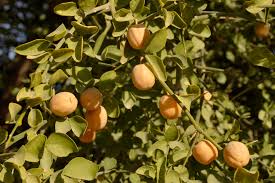
3 .Miracle Berry (Thaumatococcus daniellii)
- Taste: Neutral, but alters sour flavors to sweet.
- Uses: Novelty fruit, diabetic-safe flavoring.
- Cultural Significance: Used in Central African folklore and often introduced to children as a “magic fruit.”
- Easy Recipe:
- Miracle Berry Tasting Plate — Eat one berry, then try lemon slices, vinegar, or sour yogurt and enjoy the surprising sweetness!

4. Doum Palm Fruit (Hyphaene thebaica)
- Taste: Gingerbread-like.
- Uses: Chewed raw, used in drinks.
- Cultural Significance: A sacred fruit in ancient Egypt, associated with rebirth and often buried with pharaohs. It is still widely enjoyed in Egypt and Sudan during Ramadan.
- Easy Recipe:
- Doum Drink (Karkadeh-style) — Soak dried doum fruit in water overnight, then boil lightly with cloves and cinnamon. Serve chilled.

5. Wild Date
- Taste: Chewy and sweet
- Uses: Raw eating, paste
- Cultural Significance: Wild-harvested in the Congo Basin; considered a forest delicacy and source of bush medicine.
- Easy Recipe:
- Wild Date Energy Balls — Blend fruit with groundnuts and coconut flakes; shape into balls and refrigerate.
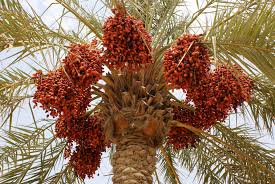
6. White Star Apple (Gambeya albida)
- Taste: Mildly sweet, fibrous.
- Uses: Fresh eating.
- Cultural Significance: A lesser-known cousin of agbalumo, it is eaten by pastoral communities in Central Africa during the dry season.
- Easy Recipe:
- White Star Apple Snack Bowl — Chop fresh fruit sprinkled with chili powder and lime.
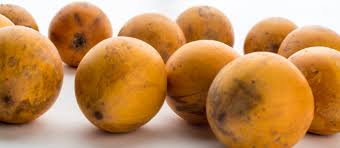
7. Moringa Fruit (Moringa oleifera pods)
- Taste: Earthy, similar to green beans.
- Uses: Boiled in stews or soups.
- Cultural Significance: Often referred to as the “miracle tree,” Moringa is vital in North and Central Africa for nutrition and traditional healing.
- Easy Recipe:
- Moringa Drumstick Curry: Peel the pods and boil them with tomatoes, turmeric, garlic, and onions for a light stew.

8. Tamarillo (Tree Tomato)
- Taste: Tangy, tomato-like with tropical notes.
- Uses: Salads, sauces.
- Cultural Significance: Grown in Ethiopian highlands, often used in sauces and chutneys served with injera.
- Easy Recipe:
- Tamarillo Chutney — Boil peeled tamarillos with onion, sugar, and vinegar. Cool and serve with roasted meats or flatbreads.
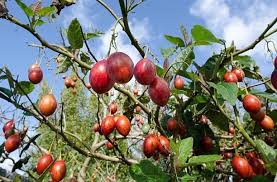
9. Cactus Pear (Opuntia spp.)
- Taste: Sweet, like watermelon.
- Uses: Juiced or eaten raw (after removing spines).
- Cultural Significance: Common in North African deserts, traditionally eaten for hydration and as a hunger-suppressant.
- Easy Recipe:
- Cactus Pear Juice — Peel carefully, blend pulp with mint and lime juice, then strain for a refreshing desert drink.
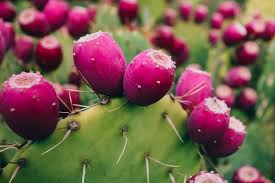
10. Wild Jujube (Ziziphus lotus)
- Taste: Dry, sweet like dates.
- Uses: Raw, in teas.
- Cultural Significance: Used in traditional Berber and Egyptian folk medicine; known for its calming effects.
- Easy Recipe:
- Jujube Sleepy Tea — Boil dried jujube in water with cinnamon and chamomile; drink before bed.

Nutritional Facts & Health Benefits Table – Central & North African Fruits:
| Fruit Name | Key Nutrients | Health Benefits |
| Safou | Omega-3 fats, iron, calcium | Heart health, energy, bone support |
| Desert Date | Potassium, vitamin A | Diabetes support, detox |
| Miracle Berry | Glycoproteins | Taste alteration for diabetics |
| Doum Palm Fruit | Fiber, antioxidants | Heart health, digestion |
| Wild Date | Natural sugars, polyphenols | Anti-parasitic, antioxidant |
| White Star Apple | Vitamin C, fiber | Digestion, immune boost |
| Moringa Pods | Iron, calcium, vitamin C | Anti-inflammatory, detoxifying |
| Tamarillo | Vitamin C, potassium | Skin health, blood pressure regulation |
| Cactus Pear | Fiber, magnesium, vitamin C | Blood sugar control, digestion aid |
| Wild Jujube | Tannins, alkaloids | Gut support, sleep aid |
🛒 Where to Buy African Exotic Fruits
Online Stores:
- Amazon: Try Baobab powder and Marula oil.
- Etsy: Velvet tamarind, miracle berry tablets.
- Specialty importers: Search for “African fruit box”.
- www.melissas.com
- www.tropicalfruitbox.com
African Markets (If Traveling):
- Lagos (Nigeria): Agbalumo, Ogbono, Bush Mango.
- Nairobi (Kenya): Baobab, Tamarind.
- Cape Town (South Africa): Marula, Monkey Orange.
Grow Your Own:
- Growable at home: Baobab, Tamarind, Snot Apple.
- Tips: It needs warm weather, lots of sun, and space for growth.
Warnings & Import Notes
- ❌ Do not eat unripe Ackee – It’s toxic if unopened.
- ✅ Check USDA import rules – Some fruits can’t be shipped fresh.
🧪 Allergies or wild foraging? Always check before eating unknown species.
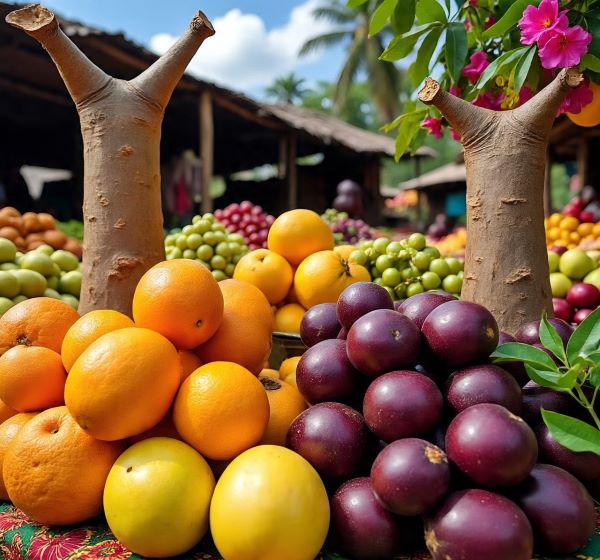
Which African Fruit Surprised You Most?
As you’ve discovered throughout this guide, exotic African fruits are much more than colorful produce. They are delicious, nutrient-rich, and filled with history and tradition. From the vitamin-packed pulp of the baobab to the sweet-altering effects of the miracle berry and the buttery richness of safou (African pear)—each fruit offers a one-of-a-kind experience.
These rare tropical fruits from Africa are gaining global recognition for their flavor, health benefits, and role in sustainable, traditional agriculture.
FAQs
1: What does baobab taste like?
Like lemon and pear candy with a dry, powdery texture.
2: Can I grow African fruits in the USA or UK?
Some like baobab or tamarind can grow in warm climates or greenhouses.
3: Are these fruits available all year?
Most are seasonal. Baobab: dry season; Agbalumo: late year; Marula: summer.

